 The end is near! Or, is it?
The end is near! Or, is it?
The reference is to the long-running effort to revise the FAA regulation affecting Light-Sport Aircraft. The new ruleset has been discussed back into 2017 and started to take shape in early 2019. Almost two years later, what is the status?
I have reported on this earlier: May 2019 • July 2019 • January 2020 • and April 2020. For additional detail, go back and check those articles. In this newest report — based on LAMA‘s work with the aviation regulator — I will describe the newest development although a short review of the history is useful.
When I ask if the end is near, I mean to ponder if FAA is done with their work. Even some in industry believe FAA is about to release what’s call an NPRM: Notice of Proposed Rule Making.
An NPRM Is not going to be forthcoming soon. Instead, the agency is preparing for a full internal review of the proposals.
The Background
Before we get to details, let’s review the situation. When Trump was elected, he promised to reduce regulation that he believed was holding back the U.S. economy. He has largely succeeded at this goal. New regulations, while not stopping, have slowed from the high-speed work under the previous administration.
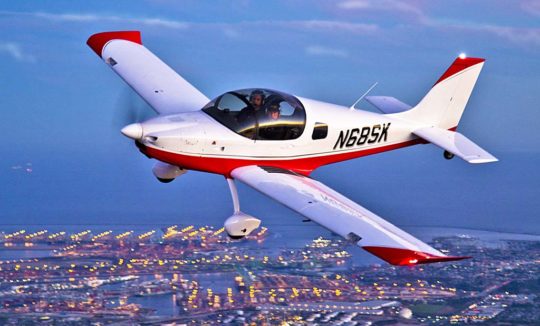
TAF’s Sling seen flying over LA in taildragger configuration. TAF also has a four seater that may fit LSA 2023.
As FAA began work on the regulation sometimes referred to as MOSAIC, they knew they needed to end other regulations in order to pass this new one. Trump had required that for every new regulation, two regulations must end.
MOSAIC is a sweeping regulation. Included are points well outside the world of LSA, for example, some warbird regulations are included as well as new rules about aircraft kit building. Only a portion is specific to LSA, however, that’s the part that covered here.
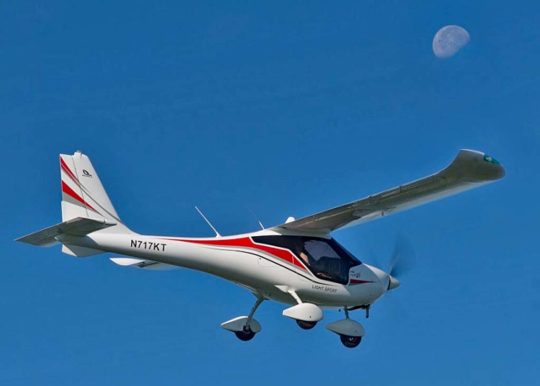
Ekolot’s handsome Topaz, a cantilevered design is the top model for this company with three different aircraft.
LAMA, the Light Aircraft Manufacturers Association (of which I am the volunteer president) partnered with the USUA or U.S. Ultralight Association, lead by Roy Beisswenger. The latter represents pilots while LAMA represents aircraft producers and other businesses supplying this market segment with products or services. This was a good link-up resulting in a good run with FAA.
The two organizations produced white papers for FAA on each topic where additional opportunities were sought and traveled multiple times to visit FAA in person. LAMA and USUA were fortunate to have great timing. The work began in 2014 before FAA began to seriously contemplate changes to the SP/LSA rule.
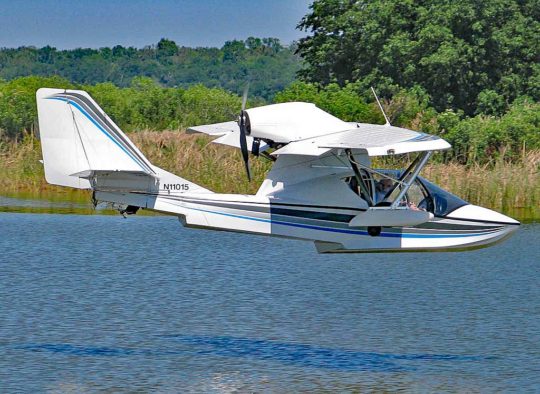
Aircraft like Progressive Aerodyne’s Searey have had retractable gear for years but such configurations may be allowed under the new regulation.
LAMA and USUA worked to persuade FAA to open up opportunities for builders of and companies servicing Light-Sport Aircraft and the pilots who own and fly them. At the start, they spent a year and several meetings asking industry and pilots what they wanted in changes to the SP/LSA regulation. They got an earful.
Wise advice later suggested trimming the wish list to something FAA could handle. If presented with a long list, the effort could reduce, not help, chances of getting what was desired.
Six years on, FAA said they have included for consideration every LAMA request, putting these suggestions in the draft regulation that FAA personnel will now begin to closely review.
However, at the request of others and on their own, FAA added more changes, such as increased weight, speed, more seats, retractable gear, and more.
Bigger, Better
…and More Expensive?
To say LAMA and USUA are hopeful about a substantial enlargement of the LSA field would be a timid statement. The organizations are hopeful for a significant expansion, but…
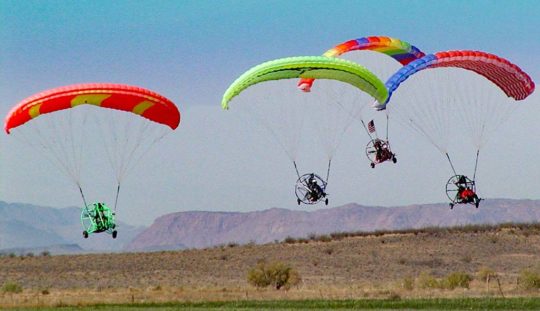
Powered parachutes, used primarily for recreational flying, also have working possibilities that may be permitted under LSA 2023 rules. Photo from Paraplane.com
The two organizations’ request for more privileges does not mean they think all LSA should become larger, faster, more capable aircraft.
More broadly, LAMA and USUA absolutely support smaller, slower, less costly, more highly specialized aircraft that add so much appeal to this segment of recreational aviation.
Best is if the “affordable” side of aviation can thrive even as the organizations hope for changes to allow activities such as commercial use.
FAA Nears “Ex Parte”
What Does that Mean?
As August 2020 begins, FAA is approaching “ex parte.” During this period FAA can no longer discuss what they are proposing.
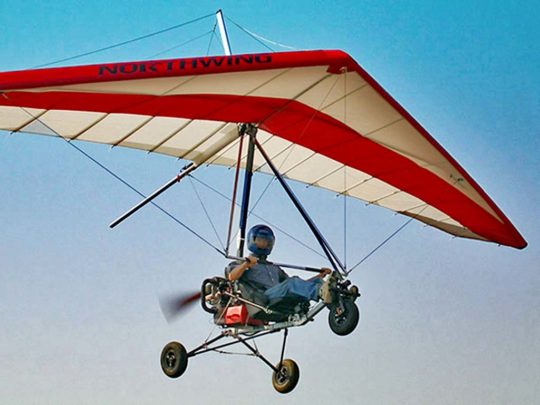
Simple and low cost aircraft such as this simple North Wing ATF trike do not need added weight or speed and do not need to change.
The regulation change is nearing an internal FAA deadline. This will come between early August and early September 2020. What does this mean?
Before FAA can finish the proposal and prepare it for a Notice of Proposed Rulemaking or NPRM, they must go through an internal review. This is no small undertaking.
FAA executive management has considerable say in how and where this goes, so executives overseeing this work have begun attending a series of every-week meetings.
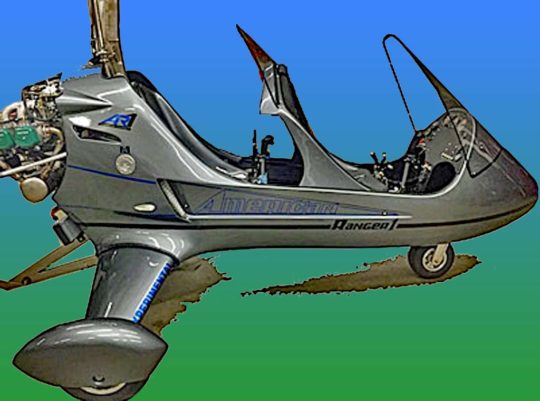
Gyroplanes such as the SilverLight Aviation American Ranger AR-1 shown here, may finally be allowed as fully-built Special LSA.
After the proposal enters the August/September time frame, what the rule writers have prepared will be examined by FAA’s legal department who will, among other things, assure the language is proper and fits correctly within FAA’s other regulations.
FAA’s economists must assure the regulation does not put undue economic burden on the public and/or taxpayer.
In addition, others inside FAA will have points they wish to make and the people actually preparing the work must accommodate the comments and requests of executives, lawyers, economists, and others.
Before the ex parte period starts, LAMA and USUA have a further update on industry requests. The news remains positive.
The Latest
LAMA and USUA personnel recently had teleconferences with two essential FAA departments: Aircraft Certification and Flight Standards.
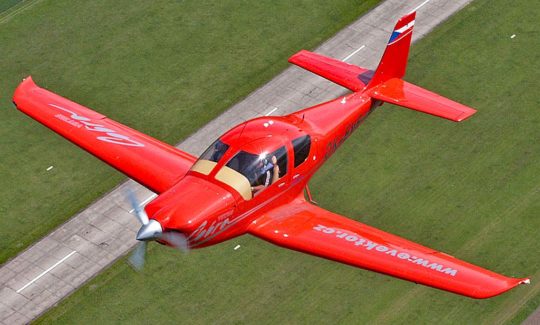
Not only was Evektor the very first Light-Sport Aircraft to win approval — as the SportStar — but the Czech company was early to develop a four seat model called Cobra that could be allowed under the MOSAIC proposals currently being reviewed.
Given the extraordinary circumstances surrounding coronovirus, these conversations have been Zoom conferences with all parties working from home. Such communications work well but lack the bigger value of in-person visits. At present, visits to DC would not work.
Aircraft Certification — These are the main people to whom the organizations have been speaking. Their aircraft role is obvious but they do not work on the operational side, that is, which pilots may fly LSA 2023 under what conditions, and who may perform maintenance on them.
Flight Standards — This group addresses the operation side. For LAMA, one of the most important initiatives has been Aerial Work or Commercial Use of LSA 2023. LAMA believes this is one of the most valuable aspects for both manufacturers and the pilots who operate the aircraft they build.
Speaking to personnel from Flight Standards personnel, we opened the discussion by explaining three areas that had not yet been well addressed:
- Pilot qualifications for expanded use of SLSA, such as commercial use
- What kinds of ratings may be required for aircraft with added capability
- Maintenance personnel requirements (recall FAA expects to add electric propulsion)
Flight Standards rule writers confirmed that commercial use is still being reviewed, but the focus has been on fixed-wing, three-axis airplanes.
For other aircraft, LAMA and USUA asked:
- What certificate will be needed to do commercial work?
- Sport Pilot? Private Pilot? Commercial?
Industry participants reminded FAA that for powered parachutes and weight shift control trikes, no commercial rating is available. The question focused on including these types in all privileges.
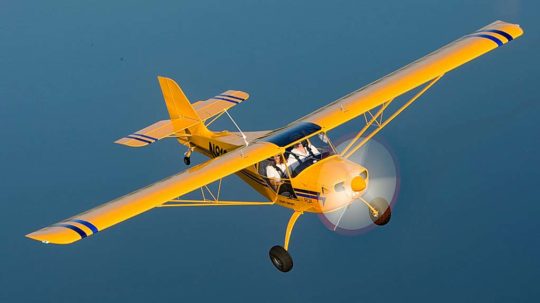
Aerotrek‘s popular models (A220, A240) have enjoyed steady sales since the beginning of LSA. Here is another aircraft that does not need to change significantly.
FAA asked if industry believes a Commercial Pilot certificate is desirable for this work?
Roy Beisswenger expressed the opinion that a Commercial certificate wasn’t necessary and that allowing Private powered parachute pilots additional privileges to what they already had — such as demonstrating an aircraft for sale, and towing — had proven sufficient.
Roy also mentioned that the military has expressed interest in, for example, certain powered parachutes. At least two companies are presently selling aircraft to the military, which prefers to support aircraft with commercial viability, but FAA rules don’t presently allow for that.
In this teleconference, LAMA and USUA learned that FAA internal reviews may start between August 5 and September 5 after which rule writers would begin working on the regulation’s Preamble points. The Preamble is what is used to justify the rule and is written first. That is when they will officially enter ex parte.
LAMA received no answer on when privileges will be decided for Commercial Use or other requests.
What LAMA/USUA
Originally Requested
- SLSA (fully built, not kit) Gyroplanes
- Aerial Work / Commercial Use
- Electric Propulsion
- Single Lever Control (in-flight adjustable prop)
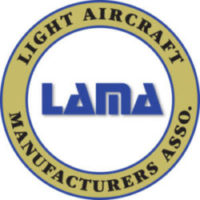
While LAMA repeated that some LSA do not need to get heavier or larger, nonetheless, growing the segment can be helpful for many business serving this market.
Other changes under consideration (to present LSA):
- Increased weight (likely based on a formula)
- Four seats
- Retractable gear
- Increased airspeed
- Electric / Hybrid propulsion
A maximum stall speed and a horsepower cap have been proposed.
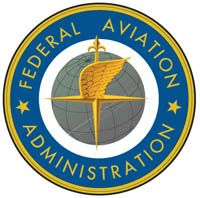
- “LSA of the future should remain “safe, simple, and easy to fly.”
- “We want to be less prescriptive …to leave more for industry to decide.”
- “LSA has been a successful development”
- FAA sees “opportunities to safely expand this sector of aviation while decreasing burden on the industry” and seeks to “make this a positive for industry.”
FAA’s Overarching Purpose
Light-Sport Aircraft designs and the manufacturers of these aircraft have performed well and FAA generally recognizes this.
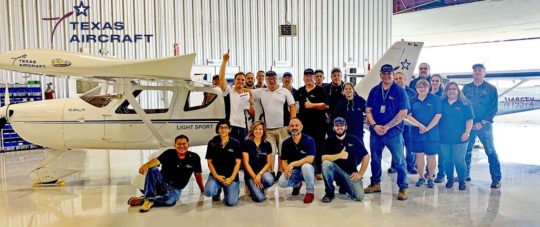
Texas Aircraft, builder of the Colt, celebrates received their FAA approval to fully build and sell the new aircraft.
While industry took the early years to get up to speed on the then-new regulation (it was introduced in September of 2004), FAA acknowledged industry is meeting the requirements satisfactorily. Evidence of this is the agency’s use of LSA experience with industry consensus standards as they rewrite the regulation for Part 23 (legacy GA aircraft) certification.
FAA rule writers sought to fill a yawning gap between LSA and Part 23 aircraft. On this particular point a whole new category — called “Light Personal Aircraft” — has been floated. LAMA and USUA are looking into this possibility. Allegedly, such LPA would, if enacted, fall between LSA and Part 23 conventional-certified aircraft.
Finally, the agency confirmed it has also been reviewing this proposal with CAAs in other countries.
That sums the report through July 2020. With internal reviews shifting into higher gear but with the flow of communication coming to a temporary close, industry will be observing FAA actions very closely.
LAMA and USUA remain committed to pursue interests of industry and the pilot community.


What are the chances the the Cessna 152, or any other basic trainer will be available for the Sport Pilot? Were I am at, in the Oklahoma City area, there are very few options, for flight instruction and zero for Rental. Being able to train in a 152 or 172 would open up options.
I see some chance for a Cessna 172 to be allowed flight using a sport pilot certificate. We will see more about that as the regulation unfolds. In the meantime, nothing prevents you from training in a 152 or 172 now.
Based on past articles on FAA regulation; since regulation has become so complicated it appears the FAA prefers their (LODA) (letter of deviation authority) methodology to expose issues one on one; or one at a time and make a decision similar to the way American case law comes about. People have complained this does not enhance safety. I believe the FAA would disagree because it gives them the opportunity to review and categorize issues for them and re-evaluate those issues at any time in the future; a library of how the FAA has chosen to proceed and available to anyone. The LODA method can be anywhere from extremely fast to taking years. And taking years will probably cause law suits. The pace of a LODA or the time for the FAA to process a LODA; will most likely depend on the preciseness of the LODA. If extremely precise and to the point and the issues are obvious; an answer from the FAA should be available in 90 days or less. Any vagueness in a LODA and the FAA is likely to ask for additional information instead of providing a LODA issuance. And based on the the US constitution commerce clause; all US government operates on very narrow ground; that is no one can obstruct commerce including government; meaning only safety issues can be considered by the FAA; which is what most people (Attorneys) believe they only do anyway.
Dan, I want to get back into flying. I do not have a current medical, I have never been denied. I want to be able to fly a small 4 seater. What kind of options do you see now and in the future?
When was the last time you held a medical? If it has been in the last ten years you can apply for Basic Med.
“Finally, the agency confirmed it has also been reviewing this proposal with CAAs in other countries.”
Do you mean they’re reviewing the LPA idea, or MOSAIC 2023 itself?
FAA is keeping other CAAs aware of their deliberations, I’m sure on a more general basis.
Hi Dan: Any idea when this may happen? If the rule changes late 2021? Am I able to fly my Tomahawk at that time? As Sport Pilot or before? Thanks, Randy.
Randy: The new regulation will not be introduced before mid-2021 based on what we know now. Then, it will be another 16 months (per FAA) so we likely will not see a new rule before the very end of 2023. Until then, a Sport Pilot certificate cannot be used to fly a Tomahawk and afterwards will depend on how FAA finalizes the rule and what comments are received. That seems a long time to wait to get back in the air.
Dan… Hoping this comment is relevant here. Thanks!
I saw your lecture/video at the Midwest Expo: https://www.youtube.com/watch?time_continue=21&v=nbBv7ifoWOg&feature=emb_logo
I posted a question as follows:
1 week ago (edited)
Dan — Many thanks for the detailed presentation. Please clarify the substance of what we might expect under “Pro Build Centers.” “Almost a sure thing.” “They’re going to open the door a lot wider.” Your reference was just at the end and went without further clarification. How does this relate to the present “Major Portion” rule for E-AB? What is the time frame for this change?
RMM: I’m glad you followed the talk so closely but you missed some aspects. Easiest first: I did talk about timelines in the talk, but summarizing — we won’t see the NPRM until mid-2021 is my forecast, and I’d bet an announcement could happen at Oshkosh 2021. Then FAA needs 16 more months so they could have a ready-to-go regulation by late 2023, not hardly before. In case you meant a timeline only for the Pro Builder Center part, that will come with the whole regulation, not separately.
As to professional builder assist centers — These already exist throughout the country. It is already possible to have someone assist you as you build your aircraft, still leaving you satisfactorily performing the so-called 51% portion. However, FAA basically likes this assistance (as it can assure a better, safer aircraft when experienced help assists) so they have indicated a formalization of the arrangement.
My focus on this aspect was light because LAMA is leaving this in EAA’s capable hands. It is a greater concern for EAA than LAMA and they are ones who suggested changes. However, LAMA strongly supports this move and also strongly supports EAA’s leadership of this part of the proposed regulation.
Hi Dan, I’m rated ATP, CFII MEI. I have no current medical. And never denied one. I have a current flight review and valid driver’s license and am in good health. I own a Piper Tomahawk. Do you think the Tomahawk will fit Light-Sport in the new rule making? Thanks, Randy.
Randy: A Piper Tomahawk will continue to have its Standard Category airworthiness and will never be redefined as a LSA. However, it may make weight and the other to-be-determined parameters and be an aircraft that could be flown without a medical by someone exercising the privileges of Sport Pilot. We simply don’t know yet (and it is entirely possible this is not yet resolved within FAA).
Can a sport pilot. perform basic maintenance such as oil changes under the new rules.
Paul: We have no reason to think this opportunity would change under the new regulation, however, as with what privileges a Sport Pilot will be allowed, the actions a trained mechanic can take are also still in the proposal stage and FAA has largely stopped talking as they near what’s called “ex party,” or a quiet period when they don’t discuss regulation in development.
Is there no more information about whether or not a sport certificate holder would be able to fly a larger plane? As someone who cannot get a medical without a risky (if it fails) and expensive SI, that is the one thing that I am excited about. The possibility of an entire new “LPA” class is worrying to me because if I know anything about the FAA it will mean they will require a 3rd class medical for it and doom it to the fate of the recreational license.
I have passed on all the information known at this time about Sport Pilot certificate privileges. No more can be known until FAA reviews their proposed regulation internally. I am well aware Special Issuance Medicals can be expensive (some very expensive) and most come with a shortened valid time. The only reason to get one is so that your Aviation Medical has not been denied. If so received, I encourage you not to apply again. ••• As to the LPA class, that is so new that we have no idea where it is going. LAMA only became aware of it by third party. In our many direct conversations with FAA, this was never once mentioned …very strange. Because of this mystique, I share your concerns about it.
Hi Dan,
I will be getting my sports pilot license in the next few weeks if all goes well and I would really prefer a 4 seater if possible. Is being able to carry multiple passengers seriously being considered for sports pilots by the FAA and if so how long do you think we will need to wait to get some kind of answer on this?
Todd: The answer is unlikely before the end of 2023. Your question relates to someone with the SP certificate flying an aircraft that can carry four people. LAMA is hopeful that could work but FAA itself does not know at this time. Insurance will be clearer. Build some time before the four seater and you’ll have a much better chance of getting affordable insurance. For more specifics, we invite you to contact Aviation Insurance Resources or AIR.
Additional kudos on your continued effort to keep the public up to date on these proposed new regulations. This possible new category of Light Personal Aircraft is intriguing. I wonder if this would be the 4-seat aircraft category part of the new regulations that would be built to ASTM standards like LSA? That would certainly “bridge the gap” between one- or two-seat ASTM LSA and multi-seat, certified aircraft.
Thomas: Thanks for the positive comment. We don’t know enough about the LPA possible segment as this was only introduced to industry players recently (May 2020 appears to the first mention, and to a small group). Yes, it is possible this will be used for the four-seater version. LAMA must investigate further as LPA has never been mentioned in any of the direct proposal briefings the organization has received over the years.
Dan, thanks so much for the update. Has there been any clues as to what the new stall speed would be?
Jessie: Yes, for LSA, a number of 50 knots has been stated, but like everything that has been proposed, it is subject to change after all the departments inside FAA have had their say. If the Light Personal Aircraft (LPA) segment is created, a slightly higher stall speed has been mentioned (52 knots). Both numbers are presumed to be with lifting devices like flaps being used, but this is not yet “written in stone,” as some say.
One of the most dangerous aspects of the Light-Sport rule is the 10,000 foot MSL / 2,000 foot AGL rule [limit]. I can pretty much guarantee that any flat-lander FAA rule maker who actually flew in the mountain west at 2,000 feet AGL in a LSA would immediately realize just how dangerous that is.
Craig: Without changing your comment, I nonetheless want to clarify that the aircraft, the Light-Sport Aircraft, is not limited to 10,000 feet. That limitation refers to a Sport Pilot certificate holder. A pilot operating as a Private or better, with an aviation medical, can operate above 10,000 feet, assuming the aircraft manufacturer allows this.
Dan,
It just dawned on me that MOSAIC may not include revisions to the SP rule, only LSA. Is that the case?
My comment was not for the light sport aircraft, but for the pilot operating under the limitations of the sport rule.
While I am as anxious as anyone for the LSA weight limit increase so I can go back to heavier aircraft, to me the 10,000 MSL / 2000 AGL is a dangerous limitation of the Sport Pilot rule. I was hoping MOSAIC would address that but perhaps I was overly optimistic.
Craig: No, the pilot side of the SP/LSA rule is most definitely going through some change as well as the aircraft side. Now that LPA has entered the vocabulary, it could be they will not change SP too much and merely require some higher level certificate to fly the possibly larger airplane category. This new wrinkle is somewhat unsettling, coming as late as it has but FAA is simply nearing some major internal deadlines. ••• FAA has not yet described privileges for Sport Pilot certificate holders or users but LAMA has provided arguments as to why the logbook sign-off method looks reasonable to allow SPs to increase their training and go forward with more aircraft capability. LAMA remains hopeful but the next big opportunity for input is when they release their NPRM and ask for public comment. This is very unlikely before well into 2021, possibly later.
It is great news that everything is still being considered; I believe those are all great proposals that will help the sport aviation segment grow in the current areas and expand to new areas. My hope for the future is that the USA sets a good example with the Sport Pilots so that ICAO may integrate it or something similar and we can standardize this segment on a global level.
Very useful article. Please allow me to translate it into Chinese and promote it in China.
Here, I would also like to explain the rights [governing how a] Light-Sport Aircraft can be used in China.
According to the definition of Light-Sport Aircraft by the Civil Aviation Administration of China, it is exactly the same as FAA.
In China, basically get a Sport Pilot license in 30 hours. If you want to operate commercially, you have to add another 35 hours of flight experience. That is to say, they can legally engage in aerial photography and agricultural and forestry spraying.
If [a pilot] accumulates more than 150 flying hours, [that pilot] can receive the training [to be a] flight instructor, [operating] as a Sport Pilot instructor. After becoming an instructor, he can carry out flight training and get paid by flight experience.
Since January 1, 2019, the Civil Aviation Administration of China has also opened up the right of a Sport Pilot license. A person with a Sport Pilot license can fly a plane with four passengers under 1,200 kilograms (about 2,640 pounds).
Hello Tai: Thank you for that review of the requirements for a recreational pilot in China. This has come a long way since I started to follow these activities and it is very encouraging for Chinese citizens interested in learning to fly.
Readers of this website should know that Chi-Tai Hsieh (or more simply for Americans, “Tai” — pronounced “tie”) has worked long and hard — along with other persons — to achieve these privileges. Well, done, Tai! He is a Vice President for General Aviation Development at AeroJones, which builds the CTLS in China.
What is interesting is that a person accumulating enough hours and having a Sport Pilot license in China can operate an aircraft much like what FAA is proposing for America after 2023. This is the nature of CAAs around the world. They look at what other aviation authorities are doing and use the best ideas, often advancing privileges even further.
By all means, Tai, please feel free to translate and use the article in any way that advances personal aviation in China.
I am a licensed private single engine and am looking for easing the regs for light sport pilot to allow two seats.
J.B.: I do not understand your question but first let me correct your language to avoid confusion. No “light sport” pilot certificate exists. It is called the Sport Pilot certificate. “Light-Sport” refers only to the airplane, not the pilot licensure.
The Sport Pilot certificate, which can be earned with a minimum of 20 hours of instruction, is fairly minimal to prove the pilot can operate safely in the airspace system. It allows two seat operations and additional skills can be added (for example, for flight into Class B airspace) with only a logbook entry following added flight instruction from a qualified instructor. All this seems to address your wishes. If I missed your message, my regrets; if so, try again.
Dan,
The rules for single seat basic Light Sport are excessively oppressive since no basic single seat LSA now exists, as far as I know. The big leap of increased aircraft certification rules from Ultralight up to the single seat basic LSA is the problem.
I propose it should be made possible for any LSA pilot or Private Pilot to fly solo any basic single seat LSA aircraft without any airworthiness certificate (the same as FAR Part 103).
Most ultralight pilots already have a pilot certificate anyway. The problem now is that ASTM standards have prevented affordable engines and airframes to be developed for the low end. The ASTM standards and the airworthiness certificate requirement should therefor not apply to single seat LSA of limited performance.
Thanks for your volunteer service.
Bill Berson, Designer
Bill: At least one single seat aircraft has LSA approval: the Elf from Ekolot. Others could follow if buyers were interested… but few are. I agree the effort to gain LSA approval by meeting all ASTM standards is no small task but it is obviously possible.
Part 103 is a very special piece of FAA regulation, the entirety of which can be printed on both sides of a single piece of paper. Were anyone to succeed in getting FAA to review this regulation with an eye to updating it, a number of changes would likely follow that might make it far less desirable. Part 103 was passed in 1982 and many FAA people have told me over the years that it is amazing to them that it went though as is. Every single FAA person I have asked claims this would never happen today, when a much more robust regulatory environment exists. Everyone should recognize that any regulation for an aircraft-like “vehicle” that needs no pilot certificate is certainly quite unusual in our modern highly-regulated society.
ASTM standards are indeed quite rigorous. Some years ago, experts estimated that the cost just to meet LSA standards — after an aircraft has been designed and thoroughly tested — would cost about the retail price of one airplane. That is a somewhat high barrier perhaps, but is a small fraction of the cost of any other form of “certification” (in quotes as LSA are not officially certified).
So, I cannot see a path forward to get FAA to accept any aircraft other than Part 103 to operate without some airworthiness certificate, however, Part 103 lives on despite the odds against its very existence.
Thank you for you kind words about the volunteer service.
—Dan
Dan,
Thanks for the “Elf” single seat LSA link.
But with only the one worldwide and still none from the USA, that elevates my point of excessive burden.
From your comment, I will retract my request for airworthiness certificate elimination and suggest alternate relief on the airworthiness issue process.
I suggest the airworthiness certificate inspection and application should be done by any local A&P (not the costly and hard to find DAR).
This would only apply to Basic Light Sport Aircraft operating under Experimental Amateur Built rules. Say up to 496 pounds and 87 knots top speed, or similar.
So an airworthiness certificate would satisfy the FAA. The builder could do inspections thereafter as with any EAB with a Repairman’s certificate.
The FAA will inspect and issue an experimental amateur built airworthiness certificate for free, today, no DAR needed. Just contact the local FSDO. They will also issue a repairman certificate so you can do the annual condition inspection yourself.
As long as the EAB aircraft meets the definition of light sport, any sport pilot can fly it.
I was pleasantly surprised how easy the process was.
I don’t think it can get much simpler or cheaper than that and would prefer to leave well enough alone.
Thanks Eric:
The Seattle FSDO will not inspect or issue amateur built airworthiness certificates. The FAR 103 ultralight is much simpler than LSA. For example, no biannual flight review is required, no condition inspection is required. No N number is required, no state registration.
There is no reason the FAA can’t issue a variety of progressive rules. The current LSA review effort seems to favor the high end. No reason not to simplify light end of burdens also.
My request of LSA relief was meant to avoid any change of FAR Part 103. At one time FAR 103 included a class of two seaters up to 496 pounds (by exemption for training). The industry exploded in those years. I am suggesting the relief for single seat only at this time, for certificated pilots, a regulatory step between full LSA and FAR 103.
Glad you can still work with your FSDO.
Bill
What about increased fuel and weight on ultralights?
Ted: Presuming you refer to a Part 103 ultralight, no recent request has been made of FAA for changes such as weight and fuel. This has been presented by others several times in the past with no changes resulting. LAMA will not ask for such a change because FAA will not simply make a change as you suggest. To make any such change would bring the entire Part 103 regulation under examination with a high likelihood that it would be changed in other ways you would definitely not like, LAMA believes. In this case, it better to leave it as it is, which is FAA simplest regulation, by far.
Just last week, I was researching if powered paragliding trikes can be used by agricultural communities for aerial-mapping as conventional aircraft, including LSA’s, are too expensive.
In the coming months, when COVID has calmed down, I will be discussing this with the USDA in Texas.
It’s a shame people in the aviation industry can’t or won’t broaden their horizons.
Thank you for the update and the teams hard work. Kudos to all